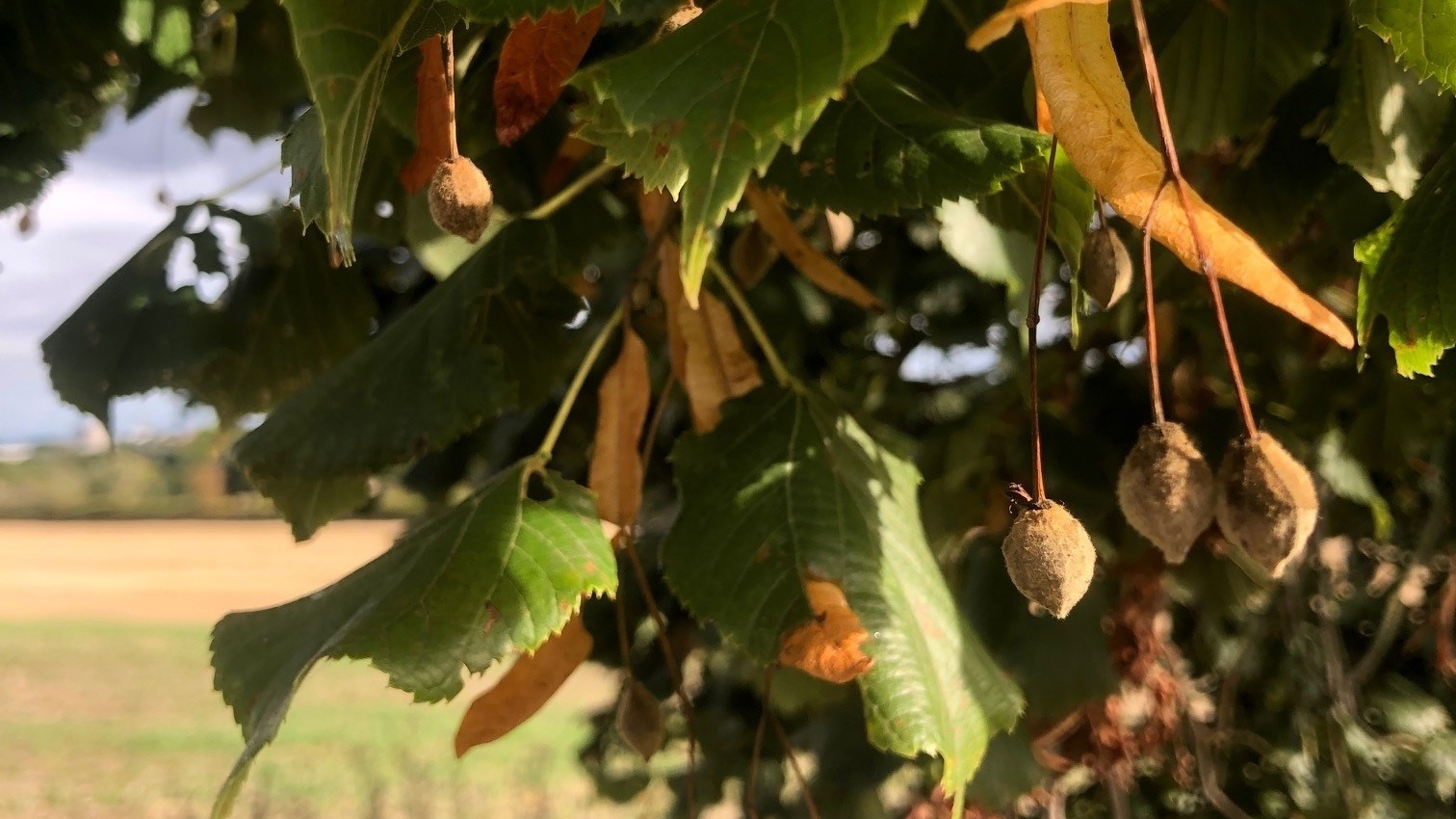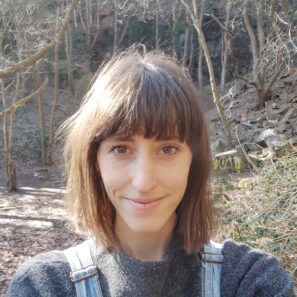Seed Sourcing Grant: Addressing The Need For Quality Tree Seed
The Seed Sourcing Grant has opened for a third round in England. There is a reduced minimum grant spend of £2,000 to encourage smaller projects to apply.
In total, £260,000 is available to fund projects that will boost domestic seed production in England.
Megan Shirley, Incentives Manager at the Forestry Commission, looks at the different elements of the grant and why it is important. She also answers some commonly asked questions around seed sourcing and the Forest Reproductive Material (FRM) system.
For more information on Seed Sourcing including links to previous webinars, and to apply for the Seed Sourcing Grant, please visit Seed Sourcing Grant or email SSG@forestrycommission.gov.uk with any further questions.
What came first, the tree or the seed?

Above: Oxley Wood, Essex: Collecting dry seed in thinned area. Copyright: Clive Ellis
To plant resilient woodlands, we need to ensure supplies of genetically diverse tree seed of known origin are available from a range of seed provenances. We also need to make sure we have a diverse range of species including both natives and future alternative species. This poses a significant challenge, especially whilst trying to minimise imports to reduce the risk of introducing harmful pests and pathogens into the UK.
Through the Nature for Climate Fund (NCF) Sector Capacity Project, we are working to increase the quality, quantity, and diversity of Seed Stands and Orchards across England. That means encouraging the development and planting of new Seed Stands and Orchards. It is also about supporting the identification, registration and management of existing Stands and Orchards to ensure they are accessible and productive for seed collections.
Forestry Reproductive Material definitions
- Forest Reproductive Material (FRM) refers to fruits, seeds, cones, cuttings, and planting stock used in forest establishment.
- Basic Material is the plant material from which FRM is derived and includes Seed Stands and Seed Orchards.
- Seed Stands and Orchards are managed by Forestry Commission through the Forest Reproductive Materials (FRM) regulations and voluntary scheme, which includes a National Register of Basic Material.
- Seed Stands are defined groups of trees in the landscape from which seed is collected.
- Seed Orchards are planted using seed or clonal material from known parents and are generally situated outside of the natural landscape in an area convenient for seed collectors.

Above: Lime seeds
Support For Tree of The Future
The Seed Sourcing Grant (SSG) first opened in September 2022, and again in May 2023, to provide funding to create or identify Seed Stands and Seed Orchards, and also make existing stands as productive as possible for seed collectors.
For this round, we have reduced the minimum grant spend to £2,000 to encourage those with smaller projects to apply for the funding. For example, if you have an existing piece of woodland that you think would make a good Seed Stand then funding could support work such as fencing, thinning or access improvements, to make it more productive for seed collections.
As well as the SSG, we are re-opening the Tree Production Capital Grant which supports nurseries and seed suppliers through investments in equipment and facilities, such as seed storage facilities.
Any Questions?
The FRM system and seed sourcing can be a complicated topic. Together with the Forestry Commission’s FRM team we have answered some commonly asked questions:

- The location and details are publicly available on the National Register of Basic Materials so all potential seed collectors are aware that they are available.
- Planting stock is traceable throughout the collection and production process to a registered source.
- The genetic quality and origin of the seed is known and validated by inspection, except for Source-Identified, unknown origin stands where an inspection is not required.
- Having more Seed Stands and Orchards across more seed zones increases genetic diversity and more resilience to pests and diseases and climate change. It also provides greater resilience of seed supply in case production fails in one area due to weather conditions.
The very minimum number of trees required for a Source- identified Seed Stand would be 30 for a monoecious species (both sexes per tree) or 60 for a diecious species (separate male and female trees). In either case, these trees would be seed bearing age and good form. However, applications are looked at on a site-by-site basis and the FRM team would usually expect there to be at least 100 trees, especially for a Selected Stand.
Trees can be thinned or selectively felled. Selective felling can be used to facilitate seed collection so long as the felling doesn’t compromise the integrity of the stand. The stand owner/agent should however inform the FRM team, at FRM@forestrycommission.gov.uk, of any changes to the composition/size of the Basic Material. this means they can keep the National Register up to date. A stand can also be registered temporarily to allow seed collection to be carried out during clear-felling of trees for harvesting. Note that felling licensing regulations apply.
You can always proactively approach commercial seed suppliers and ask them if they would like to collect from your stand/orchard. There is an FRM suppliers search that includes all registered FRM suppliers (those that collect and/or market seed) which can be accessed through the ‘Public Apps’ page on the FRM system, or through this link FRM suppliers search. To find registered collectors, head to the ‘stock type’ tab then press on a row with a ‘yes’ in the Seed collector column. Their details will then appear on the far right of the screen.
No, they must be registered suppliers and get permission from the landowner or agent of the site before starting any work.
If you are proposing to register a Selected Stand or a Seed Orchard, there will need to be an inspection carried out by Forestry Commission prior to registration. This will look at certain criteria, e.g. location and isolation, size of population and uniformity. However, it is unlikely that Source-identified stands will need to be inspected unless they are identified as indigenous.
The Forestry Commission will also periodically re-inspect Basic Material; however, they will always give at least 14 days’ notice of a proposed site visit.
Trees are long-lived individuals and produce significant numbers of seeds. Therefore, taking a greater proportion of seed available is unlikely to be damaging to natural regeneration especially if collections are not made every year. However, to allow natural regeneration of the stand and to capture the maximum genetic diversity in your seed collection, it is always better to collect fewer seeds from the greatest possible number of individuals rather than collecting all the seed from a small number of individuals.
How to Apply webinars
Tree Production Capital Grant webinar, Wednesday 10 January
With the third round of the Tree Production Capital Grant now open, this webinar will offer advice about applying and an opportunity to ask any questions. The Tree Production Capital Grant provides funding to increase domestic production of tree seed and saplings, supporting investments in expansion, automation and mechanisation of facilities and equipment.
Register to book your place.
Seed Sourcing Grant webinar, Wednesday 17 January
Join the Forestry Commission to learn more about the third round of the Seed Sourcing Grant funding. The grant team will guide you through applying, and there will be time for questions. The Seed Sourcing Grant is designed to improve the quantity, quality and diversity of tree seed sources in England. This will support availability of planting stock to meet tree planting needs and boost domestic tree seed production.
Register to book your place.
So far, 14 projects have been awarded funding through the SSG. For example, Clive Ellis applied to put in place management of compartments of an Ancient Semi-Natural Woodland to enhance seed production in a small leaved lime stand. Read more about how he’s done it here: FC Case Study – Oxley Wood (publishing.service.gov.uk).

Megan Shirley
Incentives Manager, Forestry Commission
Megan and her team deliver four grants funded by the Nature for Climate Fund: the Seed Sourcing Grant, Tree Production Capital Grant, Tree Production Innovation Fund and Woods into Management Forestry Innovation Funds.

